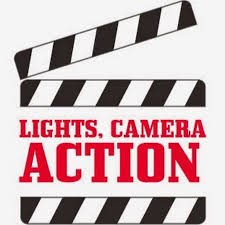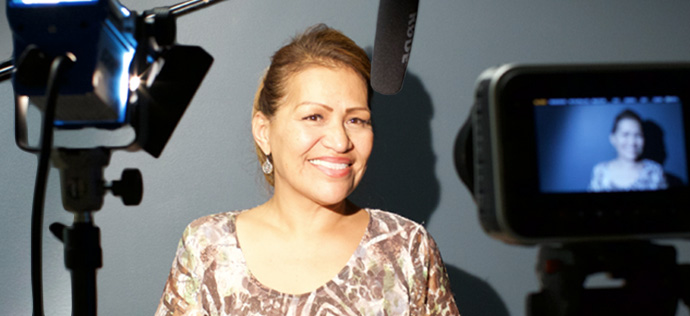 Jeff and I talk quite a bit about using video to let your caseload donors know that their giving to your organization is making a difference.
Jeff and I talk quite a bit about using video to let your caseload donors know that their giving to your organization is making a difference.
We came across a video that is a perfect example, from the Orange County Rescue Mission in Southern California. It tells the stories of 13 people who have been helped by the Mission. We’ve included the video at the end of this post.
Here is why I think it will be worth the 12 minutes it will take you to watch it:
- It poignantly personalizes the problem the organization is addressing, and it believably proves that the donor’s giving is making a difference.
- It creatively weaves into the solution the jobs that the people secured at partner businesses. This is brilliant. It shows not only that the program actually works, but it gives visibility to the businesses that are also donors to the organization. So it serves a dual purpose: proof of performance and business donor thanks.
- It will give you a template to copy, even if your organization is not in the social service sector, or isn’t faith-based like this one is. The template categories are: problem definition through a personal story that is emotional and draws you in (6 minutes) followed by a solution secured section (5 minutes), again told through a personal story that is emotional and draws you in; and finally the “thank you cap” – the part (1 minute) where the donors and volunteers are thanked for what THEY have done.=
Powerful stuff.
Now this is a more “produced” video than what you may have the capability to do. That’s fine. Use your smartphone. We have seen a number of smartphone videos that are jiggly, slightly out of focus in parts and not professionally produced – but yet they’re highly effective because they capture the problem in an emotional way, show the solution in an emotional way, and then finish it off with a heartfelt thanks.
So grab your camera or your phone and go do it.
- If you are an educational organization, capture stories of students – start with what happens when a person doesn’t have an education.
- If you are a museum – start with the people who come to the museum, and ask them why they come and what it would mean to them if you did not exist.
- If you are a conservation group, start with a polluted stream, or a forest cut down.
Here’s the thing. It seems easier for a social service organization to do this because it is simply “I was out of job, and now I have one.” Or, “I was on drugs, and now I am free from them.” But every cause (arts, music, education, health) is addressing a societal problem or need that your donors care about. And that is what you have to uncover and feature, in an emotional way.=
And once you have personalized the problem or societal need, you then move to show how you are addressing it; then you thank the donor and volunteer for what they have done through their giving.
Richard






Nice video, but I disagree with you regarding the length. It is far too long. I think donors would have been better served breaking the segments down – perhaps even using one person’s story a month. That would allow donors to have reminders throughout the year, rather than all at once. Frankly, I didn’t watch the video to the end. As compelling as the stories are, there was a certain repetitiveness to the narratives that lost my attention after 3-4 minutes. I wanted to see how the story would end, but didn’t want to wait another 8-9 minutes. I think most donors would feel the same way.
Hmmmm. I understand your point and for certain donors you could be right. But we are talking about major donors who invest a lot of money and are deeply invested. And, depending on where and how you use it might allow more time. But, having said that, watching length is also important. This video shows the breadth of situations and the comprehensive solutions. David, I would suggest you scroll to the last segments to capture the major points I was making, namely, that there are three elements and they are correctly illustrated in this video. That is the point of the blog and you have added another point, i.e. “watch the length.” Good stuff.
Your right that the arts and music should be using video to reach people. We did that this past year with some of our lessor known programs, rather than about our concerts. Being able to show the public how donated money is being spent to bring music to those who are sick or to educate our youth about music helped increase our outreach to those attending our concerts, many of which are donors. No video was more than about four minutes in length. The one regarding our integrative medicine program taking music out to those in the hospital or going through cancer treatment really pulled at the heartstrings of those in attendance. The results included an almost 10% increase in new donors.
We created a series of brief, constituent thank you videos for our 37th anniversary that imho do what you describe very well: https://www.youtube.com/playlist?list=PLPk6uiirKaSJiyC6fDfY01D85mhs6U3f6
I agree 100% with David. A really nice video, for all the reasons you list, Richard. But it’s way, way too long. From my own experience studying video analytics (as a producer of fundraising and marketing video for nonprofits), I can tell you that you’ll be lucky to get more than 50% of your audience to watch a video of 4-5 minutes from beginning to end, even if they are folks who have a vested interest . If it’s 12 minutes, you can absolutely forget it. And the simplest way to confirm this would be to look at the YouTube analytics for that video. I’d be willing to bet serious money that maybe 10 of the 800 views thus far watched all the way to the end. If you told me it was only two, I wouldn’t be surprised at all.
To me, the result is diminished impact in two ways. 1) all the storytelling from about minute 3 or 4 to the end is basically lost; and 2) it’s a one-off event rather than (as David suggests) something with repeated impact – single 2-3 minute stories spread out over the course of several months. Or even a year. What better way to stay on your audience’s radar than creating six, eight, ten short stories and feeding them to your viewers every month or two?
Clients have their own reason for doing things a certain way, but if I had been producing this video I would have very strongly advised against this approach.